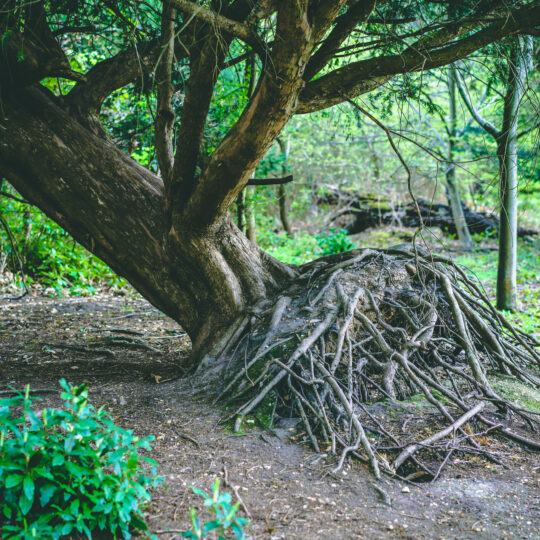Treating Tree Problems
From Pests to Structural Issues
Posted
June 4, 2020

Between disease, pests, weather damage, and decay, a tree is susceptible to a variety of issues. After diagnosing the main cause, there are various ways of treating tree problems. Here are a few examples.
Identifying and Treating Tree Problems
Just like all living things, trees are prone to certain diseases. Familiarize yourself with some of the common signs and what can be done to help save your plants.
- Leaf spot. One of the most common signs of plant disease starts with the leaves. This particular fungus thrives in cool, wet weather when new growth is about to bud. Red spots appear and rot holes in foliage which eventually turns brown and drops. Any infected leaves should be removed and destroyed. Proper pruning helps improve air circulation and control the spread.
- Fire blight. If it looks like branches on your trees and shrubs have been scorched by fire, it’s most likely because of bacteria growing in warm, moist weather. Tips of infected branches may hang down, and the bark has a sunken, dry appearance. The disease spreads by bees, rain, and infected pruning tools. Control the spread by pruning and destroying infected branches and then clean the tool to prevent further damage.
- Powdery mildew. A white coating appears on leaves during dry, humid, and cloudy conditions. Infected leaves also drop. Plants growing in shaded areas are often affected by these fungi. Different plant varieties are more resistant than others and should be considered, especially for growth in shaded areas. Certain fungicides are also available to help control this mildew.
- Gall. Swollen growth on leaves, shoots, or the trunks of trees are symptoms of this fungal or bacterial infection. Treatment depends on the cause, so it’s best to consult a tree care professional to help determine the best course of action.
- Canker. Only a section of a tree trunk or branch looks dead. Trees with smooth bark become discolored and enlarged lesions are visible. Causes range from damage inflicted by lawnmowers and other tools to environmental stress such as frost or sun-scald. Prevention is key, so help keep young trees healthy by wrapping trunks in winter and prune any dead branches.
Treating Plant Pests
Certain pests also attack plants and cause a number of problems in and around your garden.
- Japanese beetles. Starting from the eggs laid in the soil, which hatch into grubs and attack your lawn. Then the adults enjoy eating the flowers and leaves of various trees and shrubs, leaving only a skeleton-like leaf behind. Begin with grub control to help prevent further damage. You can also plant varieties the beetles don’t typically feed on, including lilac, holly, juniper, pine, red maple, rhododendron, and others.
- Emerald ash borer. Another member of the beetle family, this one is particular about ash trees. It starts with a thin, dying crown and only takes a few years after initial infection for the tree to die. Preventative treatments are available to help stop the spread of disease and should continue each year.
- Bagworms. Chewed leaves, branches, or entire plants are one indication of this pest, but a more prominent sign is the small brown bags left hanging from the branches. Larvae hatch in late spring and immediately begin feeding. The bags protect the pests even during the winter. Spray pesticide between late May and mid-June to kill young worms. Handpick and destroy bags in winter to reduce the number of eggs the following year.
Treating Tree Structure Issues
Trees aren’t only affected by fungi and pests. Structural damage can also be caused by storms and poor growth. But there are still ways to help.
- Cable and bracing. Depending on the structural issues, use a series of cables and metal braces to help reinforce a damaged trunk or major branch.
- Stakes. Help prevent young trees from leaning or bending under their own weight with a temporary stake. You’ll want to remove the supports once the root system is more established—typically after one growing season.
- Uprooted trees. As long as about half of the tree roots are still firmly planted, it’s possible to save a tree. Simply straighten the tree, replant the exposed roots, pack the soil firmly around the roots and attach two or three wires to the tree, anchoring them about 12 feet from the trunk to help support it until re-established.
Professional Plant Problem Solving
While the best way to help keep your plants healthy is proper maintenance and the ideal growing environment, there are certain factors out of your control. Before you start spraying chemicals at your poor plants, be sure you know what the real issue is. If you’re still unsure about the cause of your specific issue or the best way for treating tree problems, contact Elite Tree Care for a consultation.